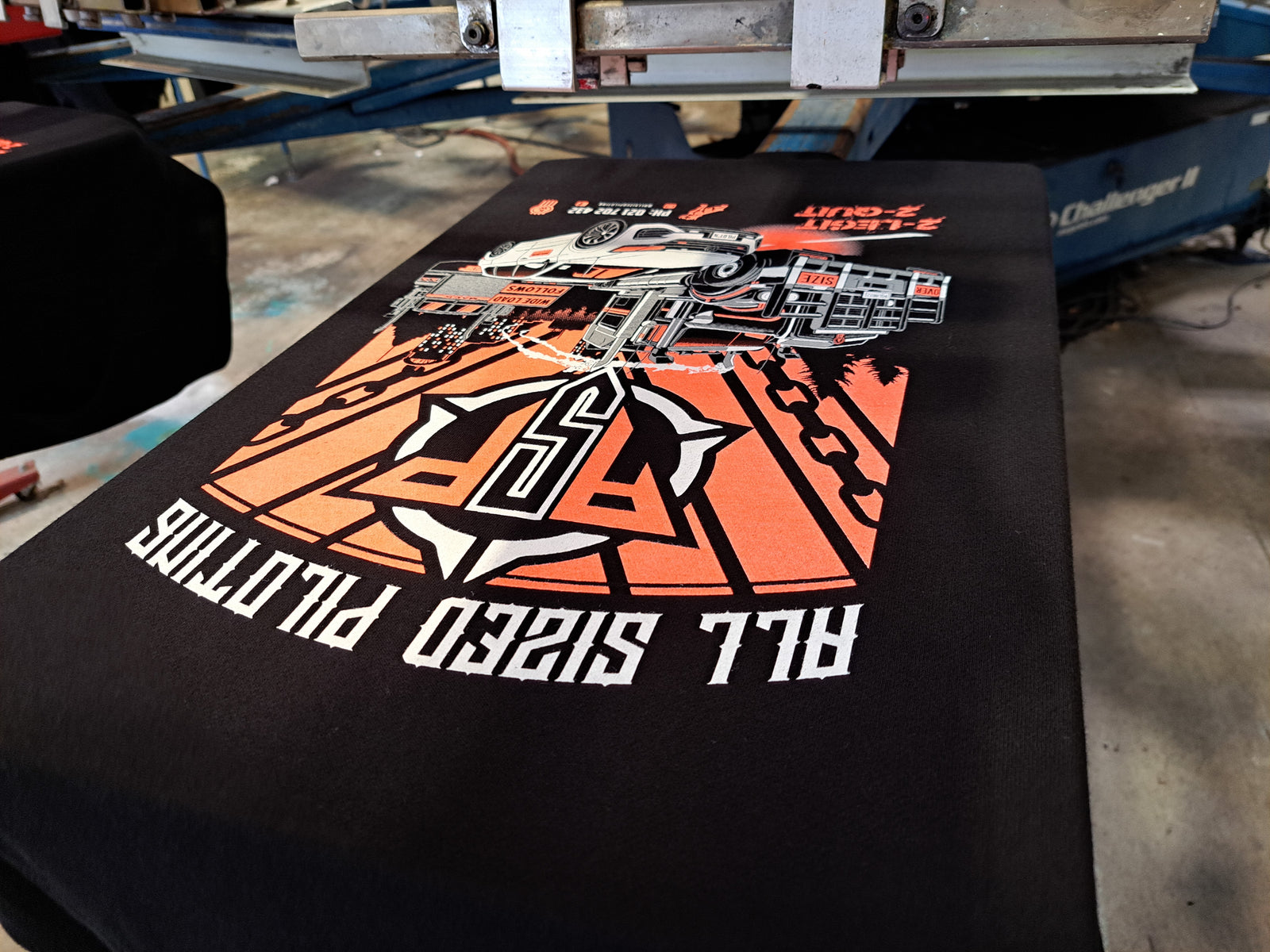Your Cart is Empty
Our store is closed from 19th december - opening again 5th january
Here at Konstruct we screen print tens of thousands of garments every year. This guide to screen printing will give you an overview of how the screen printing process works and will answer a few questions you may have about your prints.
Screen printing, also known as silk screening, is the process of applying ink onto garments through a stencil made on a mesh screen. The process was first developed in China during the Song Dynasty (960–1279 AD). Today, screen printing is one of the main print methods for printing garments.
First of all you need a screen. This is typically a rectangular frame made out of aluminium or wood on to which nylon mesh is glued. The nylon mesh is coated with a photosensitive emulsion which will harden when exposed to light. Then we need the artwork or design. A positive of the artwork is printed on to clear plastic film using dark ink which prevents light from going through. The film containing the artwork is stuck to the underside of the screen and the screen is exposed using UV lights. The light hardens the emulsion except where the design is. The film containing the artwork is then removed and the screen is washed gently with water. This removes the emulsion that didn't harden, leaving a stencil of the design. This process is repeated for each colour in the design. The screen is then placed on to a screen printing carousel. Ink is applied to the screen and a squeegee pulls the ink over the screen. The ink only goes through mesh on the screen where the emulsion didn't set, giving a vivid, long lasting print. The garment is then placed into an oven for the ink to cure and viola, your garment is ready to wear!
Not all images can be screen printed. If the artwork contains a lot of colours or is low quality, a different print method may work better. Because each colour requires a separate screen, the more colours in the print, the more screens are used and the price increases accordingly. Although it is possible to screen print in full CMYK colour, other print methods such as our digital hybrid method, will give a higher resolution and better quality print. For best results and a sharp, crisp print, the artwork should be converted to vector before the film is printed.
Screen printing gives great quality, long-lasting prints. A quality screen print should exceed the lifetime of the garment onto which it is printed. We use premium plastisol inks for the majority of our printing due to their enhanced quality and longevity. There are a number of other inks and additives available, including discharge inks; glow-in-the-dark inks; stretch additive (to redice cracking); and water-based inks.
Eventually, you may see some cracks in your screen print, especially if the print includes a large area of solid colour. When cracks appear will depend on a number of factors including: the type of ink used, the substrate (the material being printed), how the ink is cured, whether any ink additives are used and how the print has been cared for. A quality screen printer will use high-quality plastisol or water-based inks and will include a stretch additive to reduce cracking. If the correct inks and curing have been achieved, a screen print should last 50+ washes without cracking. Using a mild detergent and line drying garments in the shade will reduce the chances of your prints cracking prematurely.
Pros: great quality, long lasting, vivid prints on to a wide variety of materials.
Cons: costly if the artwork includes a lot of colours. Print dimensions are limited although oversize prints may be possible. Zips and seams are difficult to print over.
Comments will be approved before showing up.
